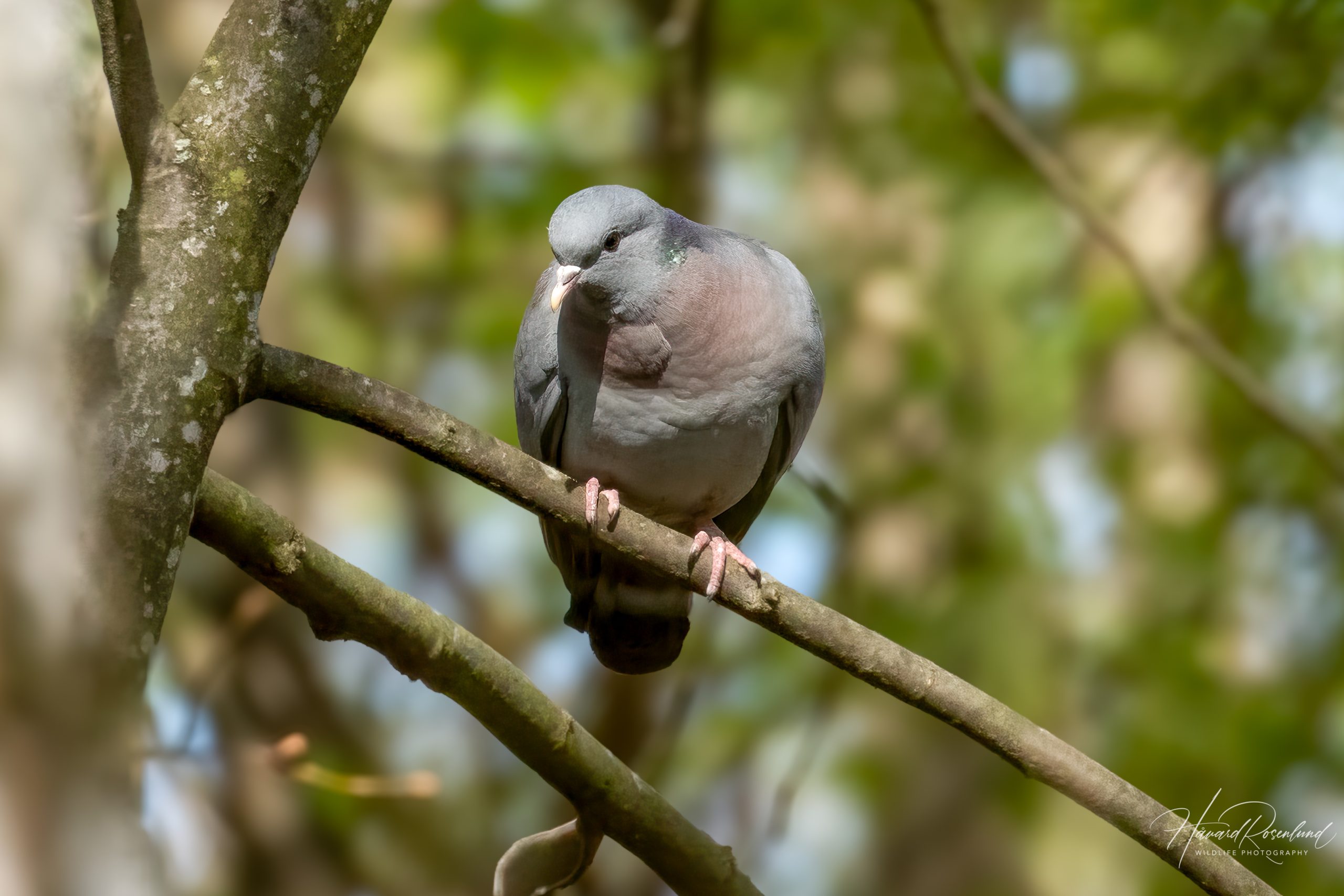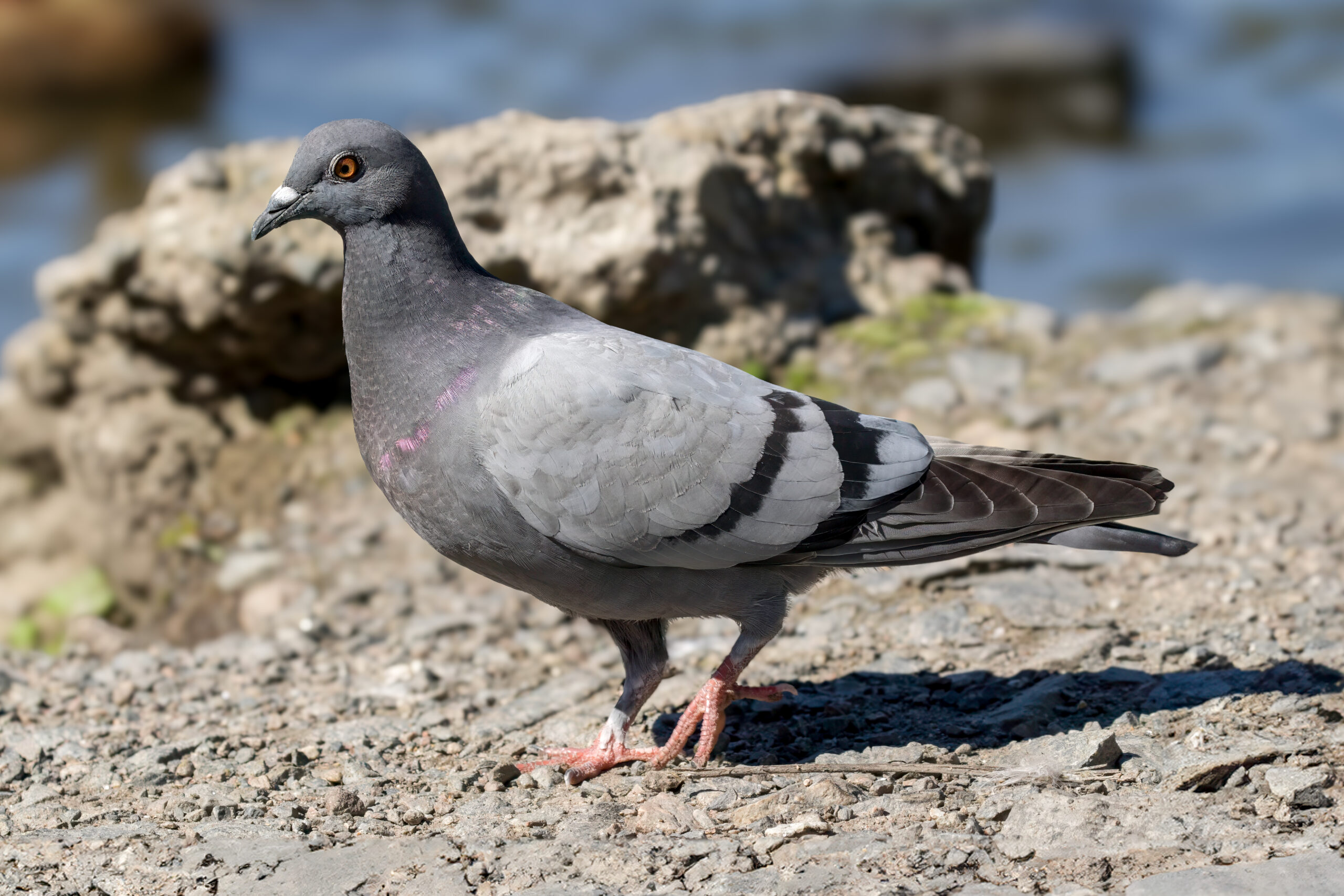Description
The stock dove (Columba oenas) is a medium-sized bird commonly found across Europe and parts of western Asia. It measures about 32-34 cm (12.6-13.4 in) in length, with a wingspan of 60-66 cm (23.6-26.0 in). Unlike the larger common wood pigeon (Columba palumbus), the stock dove lacks the distinctive white neck patch and white wing bars. Instead, it has a more uniform blue-grey coloration with a slight iridescent green sheen on its neck. There are two short distinct black bars on its wings. Its eyes are dark, and it has a pinkish beak with a pale tip. The stock dove’s song is a soft, rolling “hoo-hoo”, which also differentiates it from the wood pigeon.
Diet & habitat
Stock doves inhabit a variety of environments, including woodlands, farmlands, and parklands. They prefer areas with mature trees for nesting and open fields for foraging. Their diet mainly consists of seeds, grains, and berries, which they typically forage on the ground. They are known to feed in flocks, often mixing with other pigeon species during the non-breeding season. Occasionally, stock doves may consume small invertebrates.
Migration
Stock doves are partial migrants, with northern populations moving southwards during the winter months to avoid harsh weather. In the milder climates of western and southern Europe, they tend to be resident year-round. Their migration typically occurs from late September to November, returning to their breeding grounds from March to April.
Nesting
The breeding season for stock doves starts in late March and can continue through to early August. They are monogamous and often reuse the same nesting site year after year. Stock doves prefer to nest in tree cavities, but they can also utilize old buildings, cliffs, and nest boxes. The female lays 2 white eggs, which she incubates for about 16-18 days. Both parents share feeding duties for the chicks, which fledge at around 28-30 days old.
Status
The stock dove is listed as least concern by the IUCN. Its population is stable, and probably increasing in numbers, and it is not considered to be under significant threat. However, habitat destruction and changes in agricultural practices could pose future risks to local populations.







